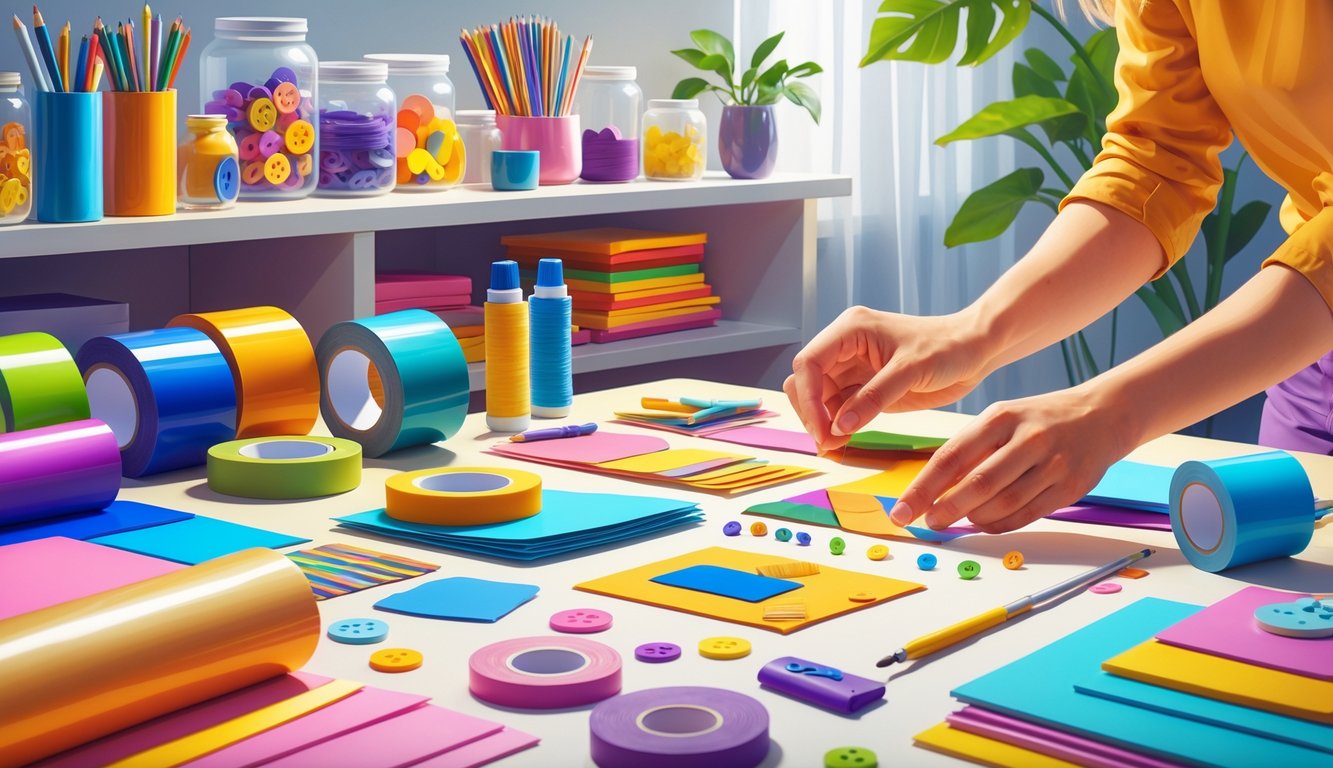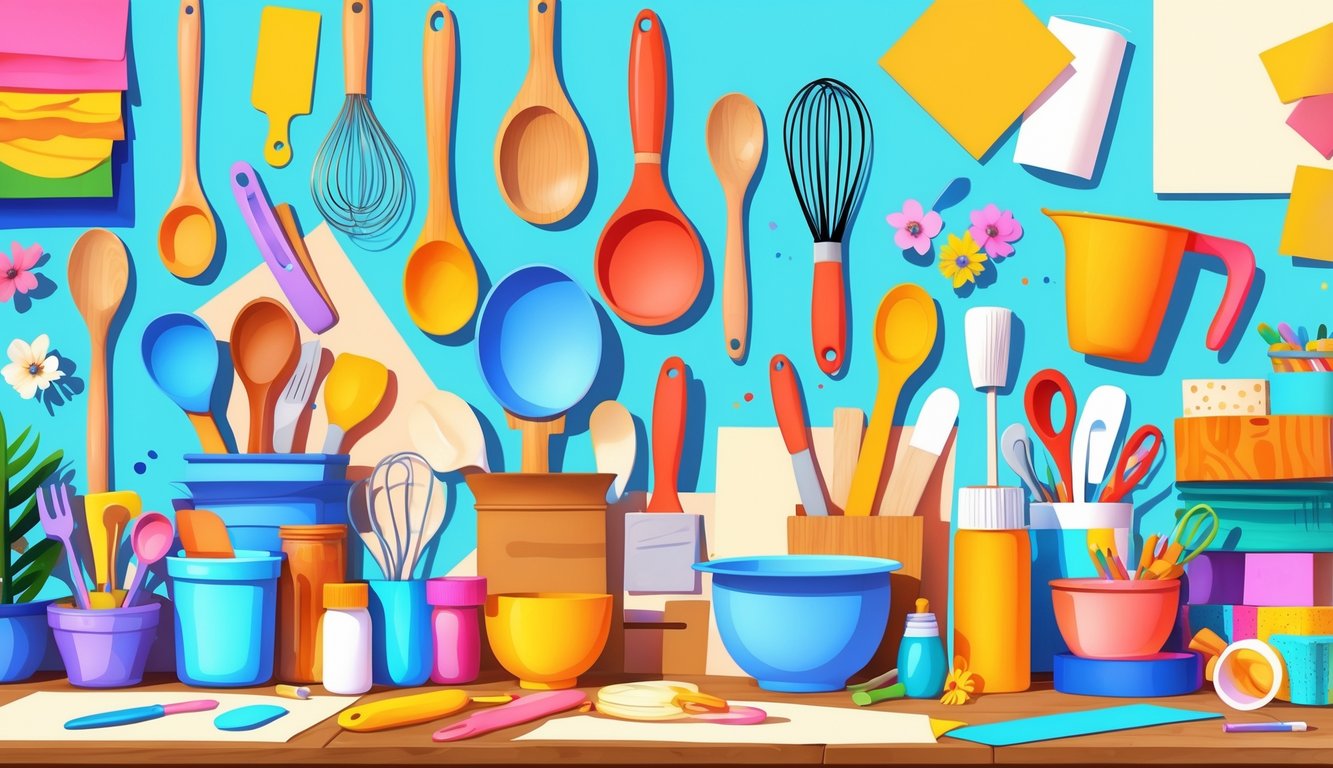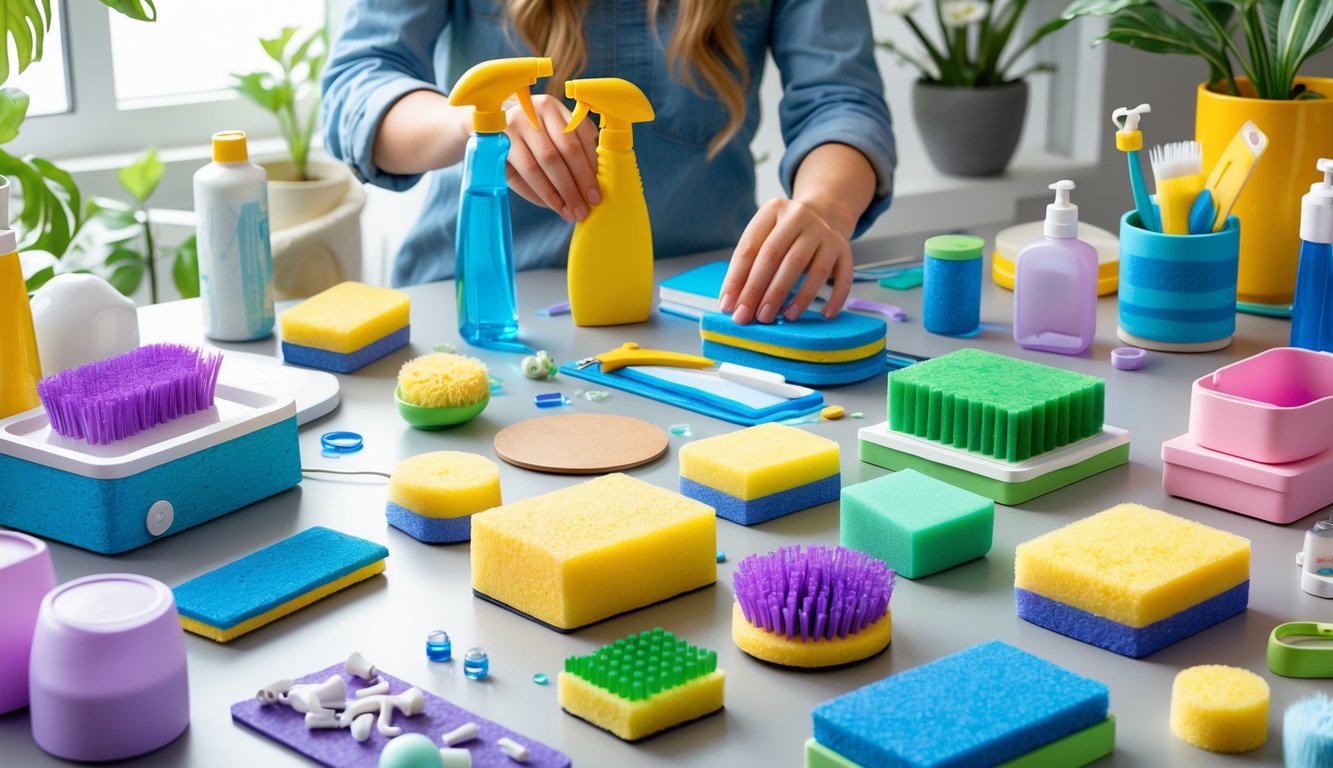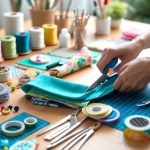
Everyday Kitchen Items as Creative Craft Tools

Tried painting a jar with a spatula while burning dinner. Multitasking with kitchen junk never goes as planned. Weirdest part? Mixing bowls and old basil outperform most of my “real” art supplies.
Using Baking Utensils Beyond Cooking
Pastry brush for egg wash? Please. Mine’s seen more Mod Podge than cake. Last week I used it to sweep glitter off the cat. Rolling pins for clay—sure, but a silicone whisk makes acrylic paint look like rain. Craft Industry Alliance (2022) says 45% of us raid the baking drawer for non-food projects. Have you ever grated bar soap for fake snow? Messy, but it works.
Cutting board? Didn’t survive my last decoupage. Artist Lisa Congdon claims silicone spatulas blend pastels better than fingers. My wooden spoon, once for risotto, now stirs paint water. Sometimes it smells like garlic, but who cares?
Spices and Herbs for Unique Effects
Oregano on pizza, sure. Oregano as bark texture? Unexpected. Old paprika? Now it’s burnt orange pigment on pinecones. Family Handyman showed dried rosemary as fairy doll wreaths—tacky glue is key. Vanilla extract stains better than coffee for antique effects, if you ignore the sugar ants.
I raid the spice rack for failed recipes anyway. Leftover saffron (expensive mistake) mixes with glue for shimmer paint. Basil for DIY stencils. Thyme? Gets stuck everywhere—wouldn’t recommend. I keep wondering if pro artists ever admit how many kitchen fails end up in their best projects.
Aluminum Foil and Wax Paper Hacks
You ever try to make something out of aluminum foil and just end up with a crumpled mess that looks like a coin from a fantasy movie? That’s my life. I keep smashing foil with cookie cutters—sometimes it looks okay, sometimes it looks like I dropped it in the garbage disposal. Michaels (yes, the store, not my neighbor) claimed last year that 22% of “fast crafts” use kitchen wraps instead of fancy supplies. Not sure how they measure that, but sure. Wax paper? Honestly, it’s like working with a greased eel until you realize it’s the only thing that’ll keep crayon shavings from fusing to your iron. Don’t ask how I figured that out.
I rip wax paper constantly. Layering helps, but I still end up ironing right onto the table because who’s got time for ironing boards? Tried using foil for pour-paint molds—pretty, but good luck getting it out again. I go through so much parchment paper for crafts, I’m convinced there’s a black hole in my kitchen. Nobody says a word about the foil monstrosities on the fridge, which is probably for the best.
Cleaning Products Inspiring Fast-Made Crafts

I wander the cleaning aisle, pretending I’m there for responsible adult reasons, but actually, I’m hoarding sponges and microfiber cloths for “experiments.” I’ve got a bin overflowing with paint rollers that never worked and more spray bottles than I have actual cleaning products. You’d think Amazon or craft stores would have all the good stuff, but honestly, I find better material next to the bleach. My neighbor once used Swiffer dusters as marbling brushes, which seemed like nonsense, but who am I to judge? It’s weird nobody talks about how cleaning supplies sneak into craft projects. Maybe they’re embarrassed.
Microfiber Cloths in DIY Projects
Here’s the thing: microfiber cloths are not all the same. Most are 80/20 polyamide/polyester—check the label, it matters if you’re actually going to use them for crafts. I chopped a pile into strips once, made “yarn” for a wall hanging. Less fraying than real yarn, and acrylic paint sticks if you don’t go wild with water. My friend, who’s an OT, swears microfiber is safer for sensory bins than felt. She’s obsessed with hypoallergenic certifications—ETSA something, I forget. I stuffed a plush toy with it once; way faster, fewer fibers floating around, and cheaper than the “premium” plush you see at craft stores. But, real talk: don’t use them for stenciling pads. They suck up all the paint and you end up with a blurry disaster. TikTok lied.
Sponge Applications in Painting
I bought a giant pack of those yellow-and-green sponges—no plan, just impulse. The cashier assumed I’m a dishwashing machine. Turns out, sponges are awesome for painting with kids. They blend colors better than brushes and don’t streak as much. One art teacher I know—she’s been running after-school stuff forever—uses regular cleaning sponges for big, messy murals because sea sponges are overpriced and not really better except for cleanup. The scrubbing side? If you get it just damp enough, it acts like a palette knife. I’m convinced the people who make “texture tools” never actually painted anything.
Repurposing Spray Bottles for Art
I trip over empty spray bottles all the time because I keep thinking I’ll toss them “next week.” Never happens. Someone on a street art forum said you can rinse them out and use them to spray water-based dyes on fabric. Seems obvious now, but it blew my mind. My neighbor’s kid used one for splatter backgrounds with watered-down acrylics—worked better than my cheap airbrush, honestly. People always talk about plastic waste, but if you keep reusing the same bottle, isn’t that better? Plus, you can change the spray just by twisting the nozzle. Just don’t forget to label them, or you’ll end up scrubbing “art smell” out of your countertops.



